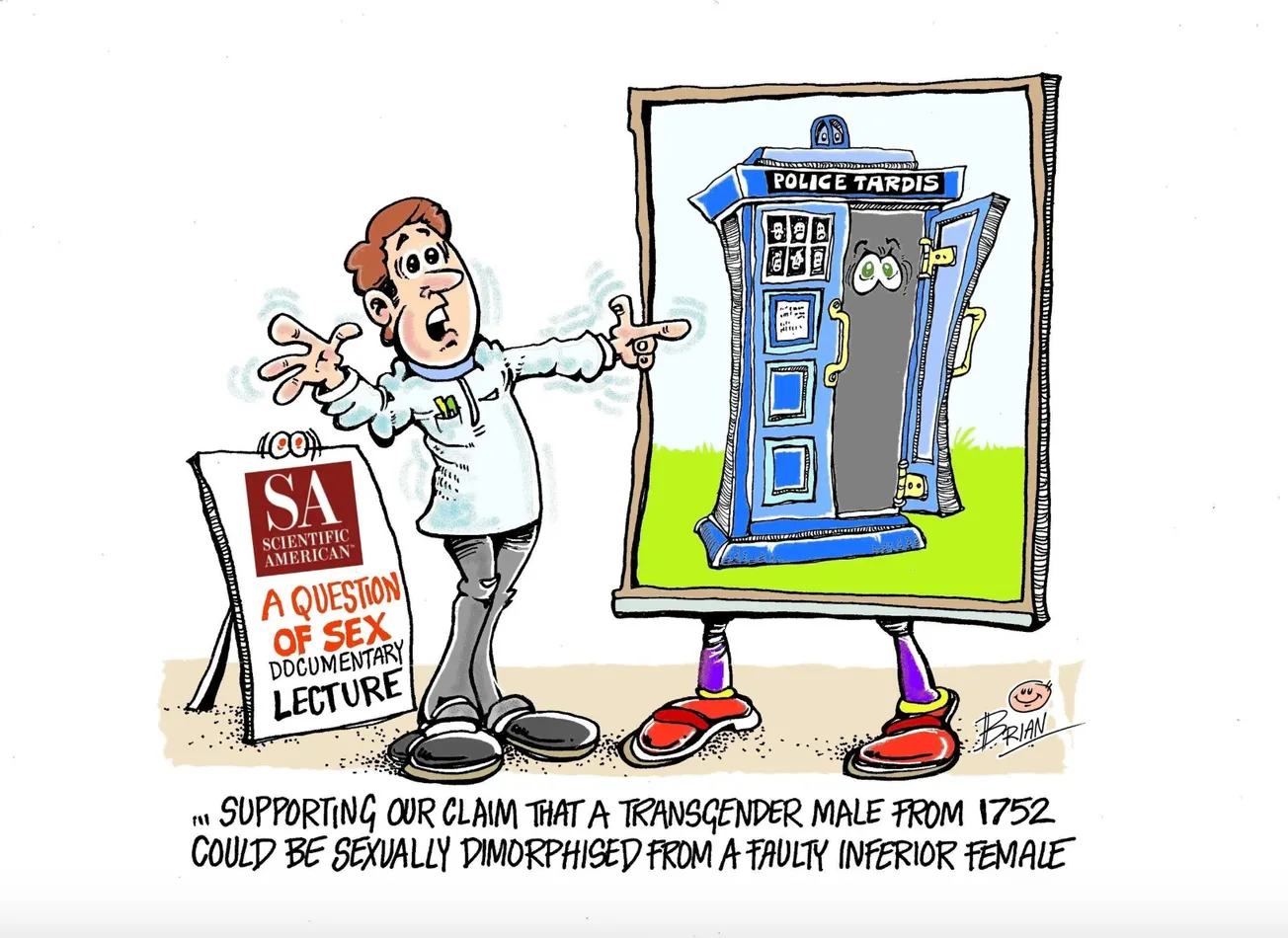Kurt Mahlburg
mercatornet.com
Kurt Mahlburg is a writer and author, and an emerging Australian voice on culture and the Christian faith. He has a passion for both the philosophical and the personal, drawing on his background as a graduate architect, a primary school teacher, a missionary and a young adults pastor.
Sexual dimorphism – one of the most fundamental concepts in human biology – is a myth invented by 18th century bigots.
That is the wild claim made by Scientific American last week in a tweet thread promoting its new documentary series, A Question of Sex.
“Before the late 18th century, Western science recognized only one sex – the male – and considered the female body an inferior version of it,” read the sixth tweet in the thread. “The shift historians call the ‘two-sex model’ served mainly to reinforce gender and racial divisions by tying social status to the body.”
The same claim was repeated in the documentary episode linked to in the tweet, but without historical evidence to substantiate it.
To be sure, there are academics who support junk science with junk history. Karen Harvey, now at the University of Birmingham, has argued that male and female are political categories invented as part of a patriarchal plot to suppress women. “As political theorists were increasingly invoking a potentially egalitarian language of natural rights in the 18th century,” she wrote in The Historical Journal, “‘woman’ had to be defined as qualitatively different from men in order that political power would be kept out of women’s reach. Science mediated a political debate over people’s rights, demonstrating that there were indissoluble differences within the human race which justified inequitable access to power.”
In fact, sexual dimorphism has been a fundamental assumption of Western civilisation from time immemorial, not least because of the Bible’s binary portrayal of sex from Genesis to Revelation. “So God created mankind in his own image, in the image of God he created them; male and female he created them,” the Bible’s first chapter reads.
Call the Bible’s authors and its medieval custodians “bigots” too, if you like – but the West’s notion of sexual dimorphism long predates the 1700s.
Scientific American’s absurd claim is the latest, greatest example of junk science. It is a stark reminder that empiricism and wokeism cannot coexist in the same universe.
Justifiably, the outlet became an object of scorn and derision online for its efforts to wokeify the field of biology.
Excuse the metaphor, but Scientific American’s agenda is as subtle as dogs’ balls.
They have zero interest in the scientific outlook of Georgian-era Europeans. Their documentary episode had one goal: to displace science and common sense with transgender talking points.
Their article included the oft-repeated claim that 1.7 per cent of the population is intersex – that is, have sexual characteristics that are both male and female.
Of course, intersex people should be included in, not ostracised by, society. They deserve protection from medically unnecessary “corrective” cosmetic surgeries, which has not always been the case.
But it’s also true that intersex people should not be co-opted to validate transgenderism, as Scientific America is here attempting. Intersex is a medical condition that in the vast majority of cases has nothing to do with LGBT identities, rainbows, flags or pride marches. Sadly, people with this genetic deformity are all too often used as a battering ram for wokeness.
Moreover, the 1.7 percent figure – said to be “as common as red hair” – is wildly inflated. If true, it would mean that half a million Australians are intersex. It would mean that six million Americans are confused when they look between their legs.
According to evolutionary biologist Colin Wright, intersex people actually comprise 0.018 per cent of the population. The 1.7 per cent estimate comes from Anne Fausto-Sterling, a sexologist with an ideological axe to grind. She defines intersex as anything that deviates from a supposed “Platonic ideal” of sex – which even includes, for example, a penis that falls outside of a 2.5cm and 4.5cm range at birth.
In fact, as psychologist Leonard Sax has explained,
Many reviewers are not aware that this [1.7 per cent] figure includes conditions which most clinicians do not recognize as intersex, such as Klinefelter syndrome, Turner syndrome and late-onset adrenal hyperplasia. If the term intersex is to retain any meaning, the term should be restricted to those conditions in which chromosomal sex is inconsistent with phenotypic sex, or in which the phenotype is not classifiable as either male or female.
Even without these helpful insights, we know that there is no “spectrum” of gametes. Every person is born with either small gametes (sperm) or large gametes (ova). Sexual dimorphism lies at the basis of human reproduction because of this single, immovable, irrefutable fact.
But who cares about stuffy old science? There are woke points to be scored, and Scientific American is on the leaderboard.









